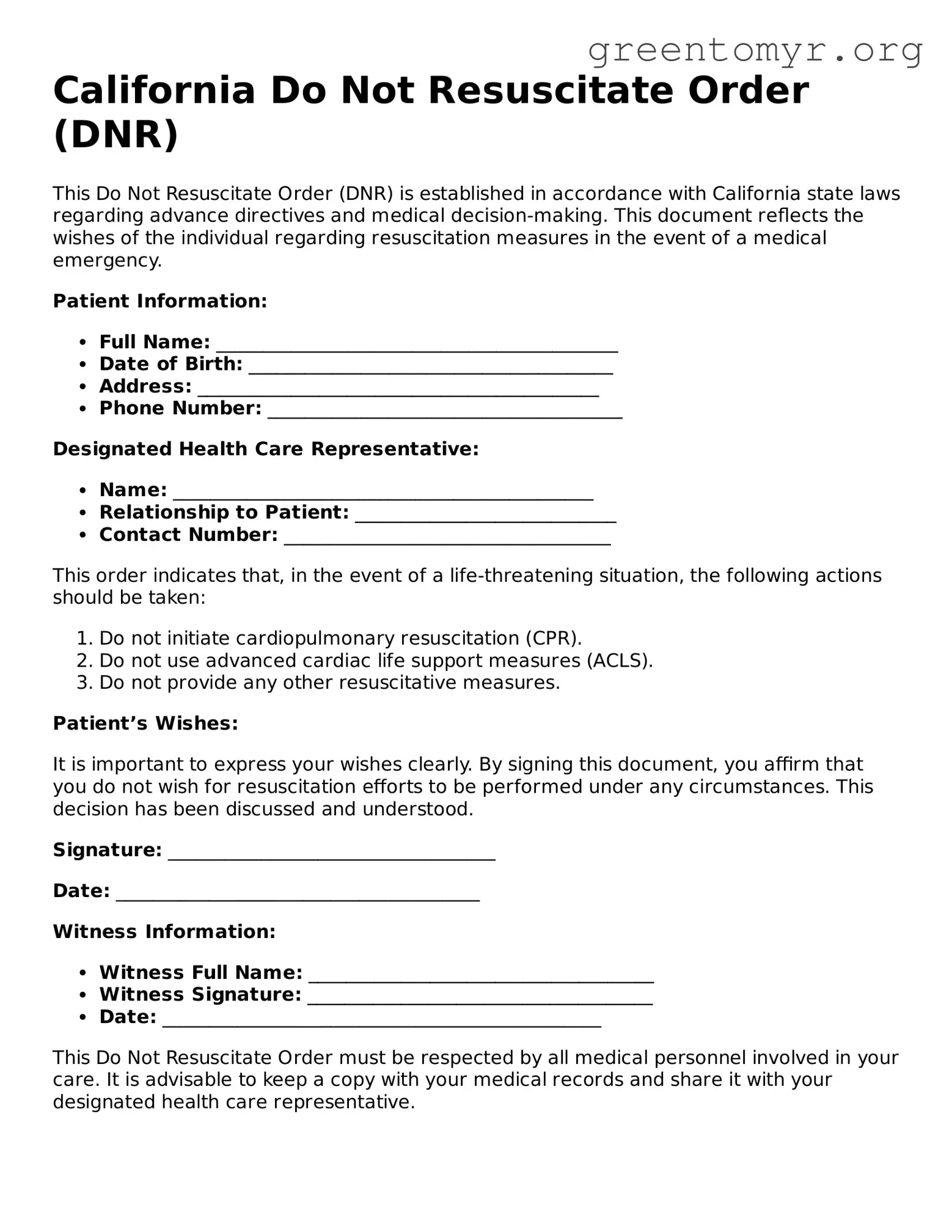California Do Not Resuscitate Order (DNR)
This Do Not Resuscitate Order (DNR) is established in accordance with California state laws regarding advance directives and medical decision-making. This document reflects the wishes of the individual regarding resuscitation measures in the event of a medical emergency.
Patient Information:
- Full Name: ___________________________________________
- Date of Birth: _______________________________________
- Address: ___________________________________________
- Phone Number: ______________________________________
Designated Health Care Representative:
- Name: _____________________________________________
- Relationship to Patient: ____________________________
- Contact Number: ___________________________________
This order indicates that, in the event of a life-threatening situation, the following actions should be taken:
- Do not initiate cardiopulmonary resuscitation (CPR).
- Do not use advanced cardiac life support measures (ACLS).
- Do not provide any other resuscitative measures.
Patient’s Wishes:
It is important to express your wishes clearly. By signing this document, you affirm that you do not wish for resuscitation efforts to be performed under any circumstances. This decision has been discussed and understood.
Signature: ___________________________________
Date: _______________________________________
Witness Information:
- Witness Full Name: _____________________________________
- Witness Signature: _____________________________________
- Date: _______________________________________________
This Do Not Resuscitate Order must be respected by all medical personnel involved in your care. It is advisable to keep a copy with your medical records and share it with your designated health care representative.
